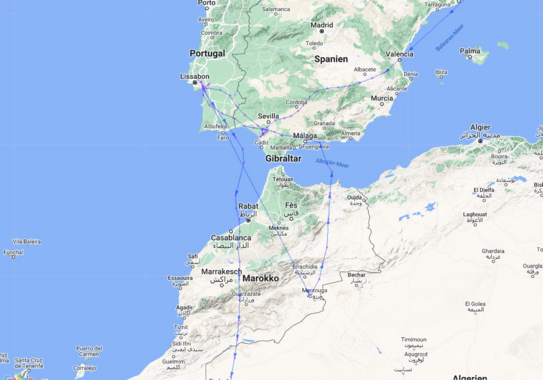She left her breeding grounds at project area V18 Unterelbe in Lower Saxony in mid-June and went to the Camargue in France, the Doñana National Park in Spain and the Sado delta in Portugal. Dicke Bertha stayed there until 11th September and attempted to cross the Sahara desert on the next day.
After she flew around 900 kilometres over the sea and Morocco, she aborted the migration and went all the way back to the Sado delta. And as if this were not exhausting enough, she even made a loop over Spain on her way back.
After she rested and gained energy for three weeks, Dicke Bertha started her second attempt on 3rd October in the late night. This time, she managed to cross the Sahara and arrived well at a lake in the Mauritanian desert on 6th October. She stayed there for 18 days and then went further to the Inner Niger Delta in Mali, which seems to be her overwintering spot for this year.
Making patterns like this visible to us is only possible by using satellite tags that record locations fairly often. In this case, the tag of Dicke Bertha calculates a location every hour and even has a special mode for migration: When the battery is well charged and the bird is flying, the tag records a location every two minutes.
